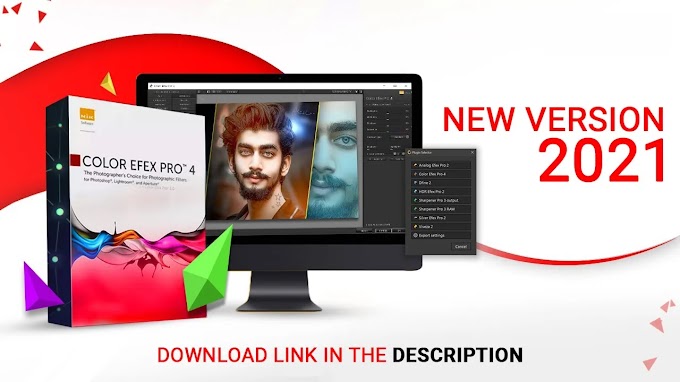What is an Illustrator?
Adobe Illustrator is a basic vector-based drawing and drawing program. Used as part of a larger design movement, Illustrator allows for the creation of everything from single construction materials to all design. Designers use Illustrator to create posters, logos, logos, patterns, thumbnails, etc. Vector Vs. Raster Understanding the differences between the two helps you to create, organize, and import artwork properly. What are vectors? Drawing programs such as Adobe Illustrator create vector drawings, lines and curves defined by mathematical objects called “vectors.” Vectors define a painting according to its geometric features. For example, a bicycle wheel in a vector diagram is extracted using a mathematical equation of a circle with a certain shape, placed in a certain position, and then filled in with a certain color. You can move, resize, or change the color of the wheel without losing image quality because basic statistics will compensate for your actions. The vector diagram is independent of resolution, that is, it can be measured in any size and printed on any output device in any solution without losing detail or clarity. For this reason, vector drawings are the best of the genre (especially the subtype) and bright drawings that should keep the lines bright when they are scaled to various sizes. Although during the first decade Adobe developed the Illustrator, especially Macintosh, it occasionally supported other platforms. In the early 1990s, Adobe released Illustrator versions of licensees for Display PostScript NEXT, Digital Equipment Corporation Ultrix, Silicon Graphics IRIX, and Sun Solaris platforms, but they were shut down due to poor market acceptance. The next version of Windows, version 4.0, was widely criticized for being more similar to Illustrator 1.1 than Macintosh 3.0, and certainly not as compatible with Windows's most popular graphics package, CorelDRAW. (Note that there were no versions of Macintosh 2.0 or 4.0 - although, the second Mac release was called Illustrator 88 - the year of its release. And there was no version 6 of Windows.) The first Illustrator version supports editing in preview mode, which did not appear in the version of Macintosh until 5.0 in 1993. Version 6 was the last Illustrator version of the Macintosh. The interface has changed dramatically with the following version to bring similarities between Mac and Windows computer platforms. The changes lasted until CS6 when some small steps were taken to restore the app to a interface such as a Mac. Verses 7–10 Adobe Illustrator 10, the latest version before Creative Suite rebrand With the introduction of Illustrator 7 in 1997, Adobe made significant changes to the user interface in terms of the layout (and integration of the user interface like Adobe Photoshop), and many users chose not to upgrade. Illustrator also began to support TrueType, successfully ending "font fights" between PostScript Type 1 and TrueType. Like Photoshop, Illustrator also began to support plug-ins, greatly expanding and rapidly deploying its capabilities. With a true user interface interface between Macintosh and Windows versions starting at 7.0, designers can eventually limit themselves to Illustrator. Corel has made a hole in the CorelDRAW FreeHand is still not available in Illustrator (high percentage scales, enhanced replacement and replacement feature, corner rotation editing, export / print only selected items, etc.). [5] Famous, Aldus created a matrix comparing his own FreeHand with Illustrator and Draw in which one "victory" of Draw came up with three ideas for the art of fragmentary fragments. Adobe bought Aldus in 1994 for Page Maker. [6] As part of the transaction, the Federal Trade Commission filed a complaint with Adobe Systems on October 18, 1994, ordering FreeHand's financial division to "correct the decline in competition resulting from acquisition" [7] as a result of Adobe's Illustrator software. As a result, Macromedia acquired Free Hand in 1995 from its first developer, Altsys, and continued its development in 2004. [8] The power difference between Photoshop and Illustrator is evident with the proliferation of the Internet, Illustrator was developed to support Web publishing, preview rasterization, PDF, and SVG (Scalable Vector Graphics.) Adobe was the first SVG builder web and Illustrator send SVG files with SVG file format plugin. [ [10] The native SVG support was incomplete in all major browsers until Internet Explorer 9 in 2011. [11] Illustrator Version 9 features a tracking feature, similar to the one in Streamline for the abolished Adobe product. Illustrator version 10 was released by Adobe in November 2001. Versions CS - CS6 Illustrator CS (aka version 11), released by Adobe for Mac and Windows in October 2003, was the first version to incorporate 3-dimensional capabilities that allow users to extract or rotate shapes to create simple 3D objects. Illustrator CS2 (version 12), released by Adobe in April 2005, was available for both Mac OS X and Microsoft Windows applications. It was the latest version of Mac that did not work traditionally on Intel processors. Among the new features added to the Illustrator CS2 were Trace Trace, Live Paint, control panel and custom workspace. Live Trace allows the conversion of bitmap images into vector art and enhances previous tracking skills. Live Paint allows users to be more flexible in applying color to objects, especially those that are scattered. In the same year that CS2 was released, Adobe Systems announced an acquisition agreementPages
Popular Posts

20 Free Text Animation Preset For Premiere Pro 2023
August 27, 2023

How To Learn Photoshop
September 06, 2023
Recent Posts
3/recent/post-list
Labels
Contact Form
Designed with by Way2Themes | Distributed by Free Blogger Templates






0 Comments